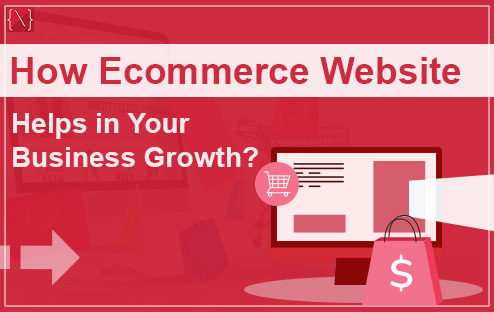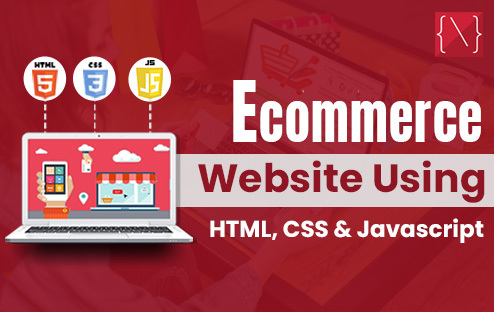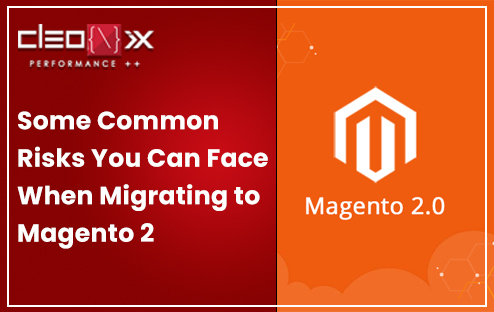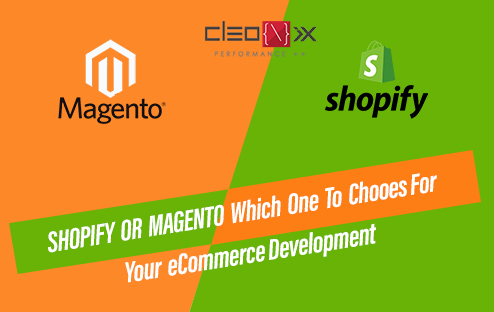
Nowadays, having an online presence has become an integral part of running a successful business. One of the most effective ways to establish an online presence and ensure growth is through an ecommerce website. An ecommerce website allows businesses to sell products or services online, reaching a wider audience and tapping into the ever-growing online market. In this blog post, we will discuss how an ecommerce website can help your business grow and succeed.
- Increased Reach and Accessibility
One of the biggest advantages of having an ecommerce website is the ability to reach a larger audience. Unlike a physical store, an online store can be accessed by people from all around the world, regardless of their geographic location. This opens up immense opportunities for businesses to expand their customer base and increase sales. With an ecommerce website, your business is no longer limited to a single location or demographic. Customers can conveniently browse and purchase your products or services at any time, from the comfort of their own homes or on-the-go.
- 24/7 Sales
Another significant benefit of having an ecommerce website is the ability to generate sales 24/7. Unlike traditional brick-and-mortar stores that have limited working hours, an online store is always open. This means that potential customers can make purchases at any time, even outside of regular business hours. Whether it’s late at night or during holidays, your ecommerce website allows customers to shop whenever it suits them. This constant availability can significantly increase your sales and revenue.
- Cost-Effective
Compared to setting up and maintaining a physical store, an ecommerce website is a more cost-effective option for businesses. Physical stores require investments in real estate, utilities, inventory, and staff, among other expenses. On the other hand, an ecommerce website eliminates the need for a physical space, reducing overhead costs significantly. Additionally, marketing and advertising efforts for online stores can be more targeted and cost-effective compared to traditional advertising methods. With an ecommerce website, you can reach a larger audience for a fraction of the cost.
- Enhanced Customer Engagement
Having an ecommerce website allows businesses to engage with their customers in a more personalized and interactive manner. Through features such as live chat, email newsletters, and social media integration, businesses can connect directly with their customers. This enables better customer support, quick response times, and the ability to build long-lasting relationships. The ability to collect customer data and feedback also allows businesses to personalize their offerings and provide a tailored shopping experience.
- Analytics and Insights
One of the most valuable aspects of an ecommerce website is the ability to track and analyze customer behavior and preferences. Analytics tools and metrics provide businesses with valuable insights into customer trends, popular products, and overall website performance. This data can be used to make informed business decisions, refine marketing strategies, and optimize the customer shopping experience. By understanding customer behavior and preferences, businesses can continuously improve their offerings and stay ahead of the competition.
- Scalability and Flexibility
As your business grows, so does the need for scalability and flexibility. An ecommerce website provides businesses with the ability to easily scale up or down based on demand. With the click of a button, you can add new products, update pricing, and expand your offerings. Additionally, an ecommerce website allows businesses to adapt quickly to market trends and customer preferences. This agility gives businesses a competitive edge and enables them to stay relevant in a rapidly changing business landscape.
Conclusion
In today’s digital age, an ecommerce website is no longer a luxury but a necessity for businesses looking to grow and succeed. From increased reach and accessibility to cost-effectiveness and enhanced customer engagement, an ecommerce website offers a myriad of benefits. By leveraging the power of online selling, businesses can tap into a global market, generate sales 24/7, and gain valuable insights into customer behavior. With a well-designed and user-friendly ecommerce website, your business can thrive in the online world and experience significant growth. Embrace the potential of ecommerce and take your business to new heights!
Need Help Building Your Ecommerce Website?
Look no further than CLEONIX TECHNOLOGIES, a leading ecommerce website development company in Kolkata. Our team of experienced developers can create a custom-designed online store that caters to your specific needs and helps you achieve your business goals. Visit online or contact us today to discuss your project and get started on your journey to ecommerce success.
ALSO READ: Digital marketing and Ecommerce- How are they related to each other?

Nowadays establishing an online presence is crucial for businesses looking to thrive in the competitive market. One of the most effective ways to do so is by creating a robust e-commerce website. In this comprehensive guide, we’ll walk you through the process of developing an e-commerce website using the fundamental building blocks of web development: HTML, CSS, and JavaScript.
Understanding the Basics:
Before going through the details of e-commerce development, it’s essential to have a solid understanding of the core technologies involved.
- HTML (Hypertext Markup Language): HTML serves as the backbone of any web page. It structures the content and provides the framework for your website. Start by creating the basic structure of your e-commerce site using HTML tags. Define elements such as headers, footers, navigation bars, and product sections.
htmlCopy code<!DOCTYPE html>
<html lang="en">
<head>
<meta charset="UTF-8">
<meta name="viewport" content="width=device-width, initial-scale=1.0">
<title>Your E-commerce Website</title>
<!-- Additional meta tags, stylesheets, and scripts can be added here -->
</head>
<body>
<!-- Your website content goes here -->
</body>
</html>
- CSS (Cascading Style Sheets): CSS is responsible for the presentation and styling of your HTML elements. Use CSS to define the colors, fonts, layout, and overall visual appeal of your e-commerce site. Create a separate CSS file to maintain a clean and organized code structure.
cssCopy code/* styles.css */
body {
font-family: 'Arial', sans-serif;
background-color: #f4f4f4;
color: #333;
}
/* Additional styling for headers, footers, navigation, and product sections can be added here */
- JavaScript: JavaScript adds interactivity and dynamic behavior to your e-commerce website. It enables features like product filtering, cart management, and real-time updates. Use JavaScript to handle user interactions and create a seamless shopping experience.
javascriptCopy code// script.js
// JavaScript functions for handling dynamic elements and user interactions
Building the E-commerce Structure:
Now that you have a basic understanding of HTML, CSS, and JavaScript, let’s focus on creating the essential components of an e-commerce website.
- Navigation Bar: Design a responsive navigation bar that allows users to easily navigate through different sections of your website. Include links to the homepage, product categories, shopping cart, and user account.
htmlCopy code<!-- Example navigation bar in HTML -->
<nav>
<ul>
<li><a href="#home">Home</a></li>
<li><a href="#categories">Categories</a></li>
<li><a href="#cart">Cart</a></li>
<li><a href="#account">Account</a></li>
</ul>
</nav>
- Product Display: Create a visually appealing layout to showcase your products. Use HTML to structure the product grid and CSS to style it. JavaScript can be employed to implement features such as product filtering, sorting, and displaying real-time updates.
htmlCopy code<!-- Example product grid in HTML -->
<section class="product-grid">
<!-- Product items go here -->
</section>
- Shopping Cart: Implement a functional shopping cart using HTML, CSS, and JavaScript. Allow users to add products, update quantities, and proceed to checkout. Utilize JavaScript to manage the cart state and update the UI dynamically.
htmlCopy code<!-- Example shopping cart in HTML -->
<section class="shopping-cart">
<!-- Cart items and total go here -->
</section>
- Checkout Process: Design a user-friendly checkout process with multiple steps, including shipping details, payment information, and order confirmation. Use JavaScript to validate user inputs and ensure a smooth checkout experience.
htmlCopy code<!-- Example checkout process in HTML -->
<section class="checkout">
<!-- Checkout steps and form fields go here -->
</section>
Optimizing for Performance and Responsiveness:
As you progress with the development of your e-commerce website, consider the importance of performance and responsiveness. Optimize images, minify CSS and JavaScript files, and implement responsive design principles to ensure a seamless experience across various devices.
In conclusion, developing an ecommerce website using HTML, CSS, and JavaScript may seem daunting at first, but with the right planning and knowledge, it can be a rewarding experience. Make sure to do your research, test and debug your website, and seek professional help if needed. And if you’re in Salt Lake, Kolkata don’t hesitate to reach out to CLEONIX TECHNOLOGIES for expert assistance in an ecommerce website development.

Magento 2 is a popular eCommerce platform that offers businesses the ability to manage their online stores with ease. However, migrating to Magento 2 can be a daunting task, and there are many potential risks that businesses should be aware of before undertaking the migration process. In this blog post, we will discuss some common risks you can face when migrating to Magento 2 and provide some tips on how to mitigate them.
Data Loss
One of the most significant risks when migrating to Magento 2 is data loss. During the migration process, data can be lost due to various reasons, such as improper data mapping or incorrect data formatting. To mitigate this risk, it is essential to back up your data before starting the migration process. You should also perform a thorough data audit to identify any potential data issues and work to resolve them before the migration begins.
Downtime
Another common risk when migrating to Magento 2 is downtime. Downtime can occur when your website is unavailable due to maintenance or other issues, which can lead to a loss of revenue and damage to your brand reputation. To avoid downtime, you should plan your migration carefully and schedule it during a time when your website has the least traffic. Additionally, it is essential to work with experienced developers who can minimize downtime and ensure a smooth migration.
Extension Incompatibility
Magento 2 has a different architecture than Magento 1, and as a result, extensions that worked on Magento 1 may not be compatible with Magento 2. This can cause problems during the migration process, such as functionality loss or website crashes. To mitigate this risk, it is essential to identify all the extensions you are currently using and ensure that they are compatible with Magento 2. You may also need to find alternative extensions that are compatible with Magento 2 to replace any that are not.
Customization Issues
Another risk when migrating to Magento 2 is customization issues. If you have customized your website extensively, you may encounter issues during the migration process. Customizations that are not properly migrated can lead to website crashes, functionality loss, and other issues. To mitigate this risk, it is essential to thoroughly document all your customizations and work with experienced developers who can ensure that your customizations are properly migrated to Magento 2.
Cost Overruns
Migrating to Magento 2 can be costly, and there is a risk of cost overruns. This can happen due to unexpected issues during the migration process or changes in the scope of the project. To mitigate this risk, it is essential to create a detailed migration plan and budget that includes all the necessary resources and potential costs. You should also work with experienced developers who can help you identify potential cost overruns and find ways to minimize them.
SEO Issues
SEO is critical for any eCommerce website, and there is a risk of SEO issues when migrating to Magento 2. If not properly managed, the migration process can result in a loss of SEO ranking, which can lead to a significant decrease in traffic and revenue. To mitigate this risk, it is essential to work with experienced developers who can ensure that all your SEO settings are properly migrated to Magento 2. You should also perform a thorough SEO audit after the migration to identify and resolve any potential issues.
Training Issues
Migrating to Magento 2 can be a significant change for your team, and there is a risk of training issues. If your team is not properly trained on Magento 2, they may struggle to use the platform effectively, which can lead to a loss of productivity and revenue. To mitigate this risk, it is essential to provide your team with comprehensive training on Magento 2 before and after the migration. You should also work with experienced developers who can provide guidance and support during the training process.
In conclusion, migrating to Magento 2 can be a complex process, and there are several risks involved. However, with careful planning and the help of experienced developers, businesses can mitigate these risks and ensure a successful migration. It is essential to perform a thorough data audit, identify potential issues, and create a detailed migration plan and budget that includes all the necessary resources and potential costs. Working with experienced developers who can minimize downtime, ensure proper data migration, and provide comprehensive training for your team is also crucial. By taking these steps, businesses can make the transition to Magento 2 with confidence and avoid the potential risks that come with the migration process.
READ ALSO: Tips to Optimize Magento Cart Page for Better Conversion Rate

The online shopping market is growing at an exponential rate. Especially over 2 billion people have shopped online during the pandemic period. In fact, eCommerce stores have crossed 4.7 billion sales worldwide. The prime factor behind this exponential rise has to be the lockdown impositions in various countries. So, if you enter this eCommerce platform and hit the hot iron, congratulations; You have made the right choice.
But in order to achieve success, your company will need a robust platform to sell its goods and services. Magento and Shopify are two of the best in the market for creating eCommerce websites. Each of them provides us with various features and functionalities that cater to a specific type of business. Therefore, in this blog, we will discuss everything you need to know about Shopify and Magento. This will provide you with the proper insight regarding which one to choose for your eCommerce development.
Magento Vs. Shopify: What Are They?
Introduced in 2008, Magento is an open-source highly customizable eCommerce platform. It works like a Content Management System (CMS) and shopping cart platform. The users can create customizable eCommerce websites based on their business preferences and choice.
Shopify is also an eCommerce platform founded in 2006 by Scott Lake, Daniel Wienand, and Tobias Lutke. It allows users to create powerful eCommerce websites that will help to acquire more customers. So, with Shopify, your company can generate more sales and you can manage your daily activities much more efficiently.
The Main Difference Between Shopify & Magento
Ease Of Use
This has to be the first criteria when you decide to choose an eCommerce platform. Without the ease of use, your business can face a lot of issues regarding technicality and flexibility. From creating a website to managing and maintaining it, an easy to use website can save you time and effort. Most importantly, ease of use can directly impact your website’s performance and sales figures.
Magento: The ease of use curve with Magento is quite steep to start your eCommerce journey. Yes, the interface is clean and responsive. But to design a powerful website, you need to have coding knowledge for management and store creation.
Shopify: When compared to Magento, Shopify is much easier to use. You don’t need to have any expert knowledge to create an eCommerce website, manage, and maintain it. The user interface provides the user with a functionality called “drag-and-drop”, which makes the creation process much easier.
Final Words
Selecting the right eCommerce platform is extremely important for the success of your online business. However, between Shopify and Magento, the main difference comes down to ease of use. If you are someone who can afford to hire a developer to do the website designing process, go for Magento. Otherwise, Shopify is the best option available for you in the current market.
Also Read: Business benefits of Laravel development services
About the author
Cleonix Technologies
A professional Web Development Company is highly focused on providing world class and best in the industry standard services in every domain that we work upon.

 AJ 14, Salt Lake, Sector 2, Kolkata - 700091 |
AJ 14, Salt Lake, Sector 2, Kolkata - 700091 |  743 Virginia Ave NE Atlanta, GA 30306
743 Virginia Ave NE Atlanta, GA 30306




